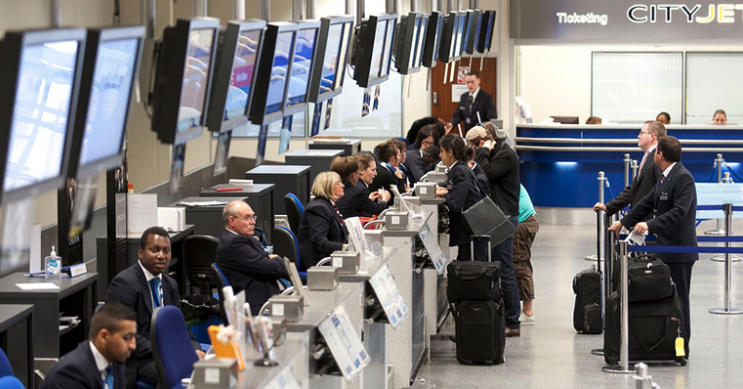
A Toy Story
Sometimes everything starts by simply asking - why?
Why is the national animal of Scotland a unicorn?
And why if I try and search for an ethical toy can I not find anything that might also include plastic or with a battery inside? If I look up ethical fashion, I can see mainstream clothing companies scrutinised and compared against each other as I prepare my Christmas shopping list. Why the difference?

Worker Voice Data is the Next Solution to Help Businesses Address Modern Slavery
Million Makers sets a new standard in harnessing the power of worker voice to inform businesses human rights due diligence from the ground up and from the people who know.

Jacob’s story
Jacob worked as a fruit picker in Australia while backpacking on a working holiday visa. He shared his story with Be Slavery Free.
I came to Australia in early 2017 on a working holiday visa (sub-class 417). My visa allowed me to stay in Australia for 12 months.

Flying With Eyes Wide Open
Flying With Eyes Wide Open
Some of us are starting to travel again. If you are, then learn to see what may be happening.
Professor Mark Hutchinson is Professor of Medicine at Adelaide University. Before covid he was flying from Italy to London City Airport. When boarding the plane, he noticed an elderly woman with a young man, perhaps her son. On arrival, he was lined up to go through Passport Control and the elderly lady was in front of him, but the young man was not to be seen. As they approached the booth the women suddenly kneeled. Mark thought “What is going on here?”

Feeling the urgency
As Matt Friedman said in a recent blog – “We must all feel a sense of urgency”
Modern slavery is often complex with few simple solutions because it is a wicked problem - treating strands is not helpful when there are no strands but rather a continual tangled strand. This is how the traffickers want it to be!

Why is child labour still an issue in the Chocolate Industry?
To get to the how of solving the child labour issues in the cocoa growing in West Africa we have to know the why. To find the answer to the why we have to look at the cause.

ANTONIN’S STORY
I met Antonin in Abidjan in Côte d’Ivoire as I was walking from my hotel to find an ATM. He crossed the road and walked alongside me and asked, “are you a big man?”. A big man in West Africa is someone who has influence, has some power and is generally considered wealthy. What pursued in his broken English and my very broken French was a discovery of his story.

HOW WE ASSESS TRACEABILITY AND TRANSPARENCY
Cocoa is cheap – dirt cheap, so much so that most cocoa farmers barely eke out an existence. The average cocoa farmer earns under US$1.20 per day, and women cocoa farmers are thought to earn around 50 cents per day.

AGROFORESTRY IN THE CHOCOLATE SCORECARD
Though cocoa has been a major driver of deforestation worldwide, it can become the reverse - an agent of re-greening around the planet.

CHILD LABOUR AND EMERGING TRENDS ON MONITORING SYSTEMS
Around 75% of the world’s cocoa is grown in West Africa. Child labour issues in West Africa for cocoa have been known for over 20 years. According to the NORC Report around 1.56 million children are estimated to be in child labour in two countries alone – Ghana and Côte d'Ivoire.

GRADING AGRICHEMICAL MANAGEMENT
We are facing the sixth mass extinction. Much of this – and in particular the insect apocalypse – is driven by chemicals in agriculture. Thus, we need to see cocoa and chocolate companies reforming their current approaches and implementing practices that do not rely on agrichemical usage.

EARNING A DECENT LIVING THROUGH COCOA - WHY IS IT SO HARD?
People earning a decent living from the work they do is a basic human right.
On the surface this looks simple. So why is it so hard for cocoa farmers to earn a decent living?

ASSESSING DEFORESTATION AND CLIMATE
When biting into a crunchy caramel-filled chocolate candy or savouring the warm aroma from a steaming mug of hot chocolate, many chocolate lovers don’t know where the cocoa ingredients in their chocolates come from, nor the costs that their production can bring on nature and the climate.
